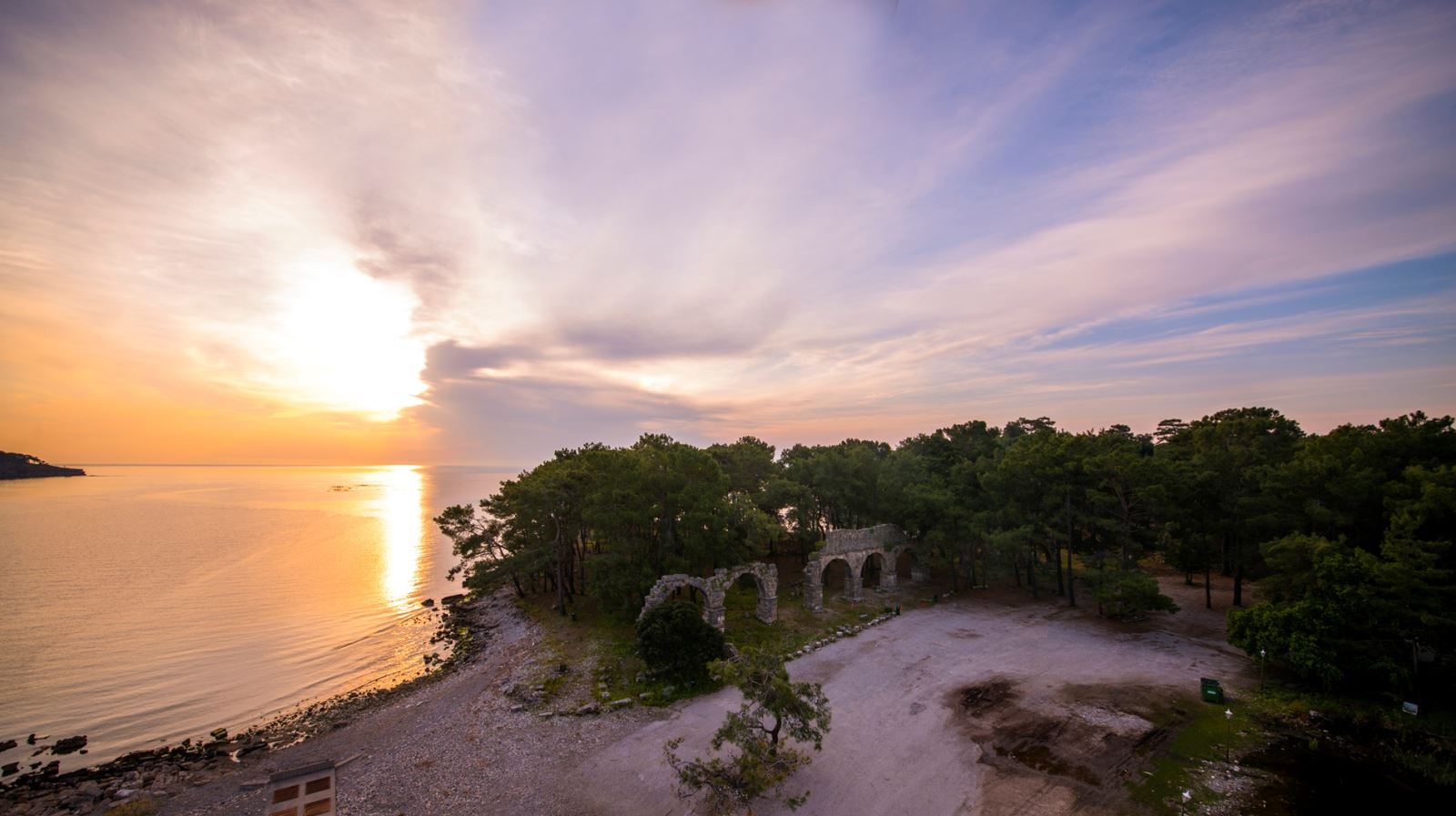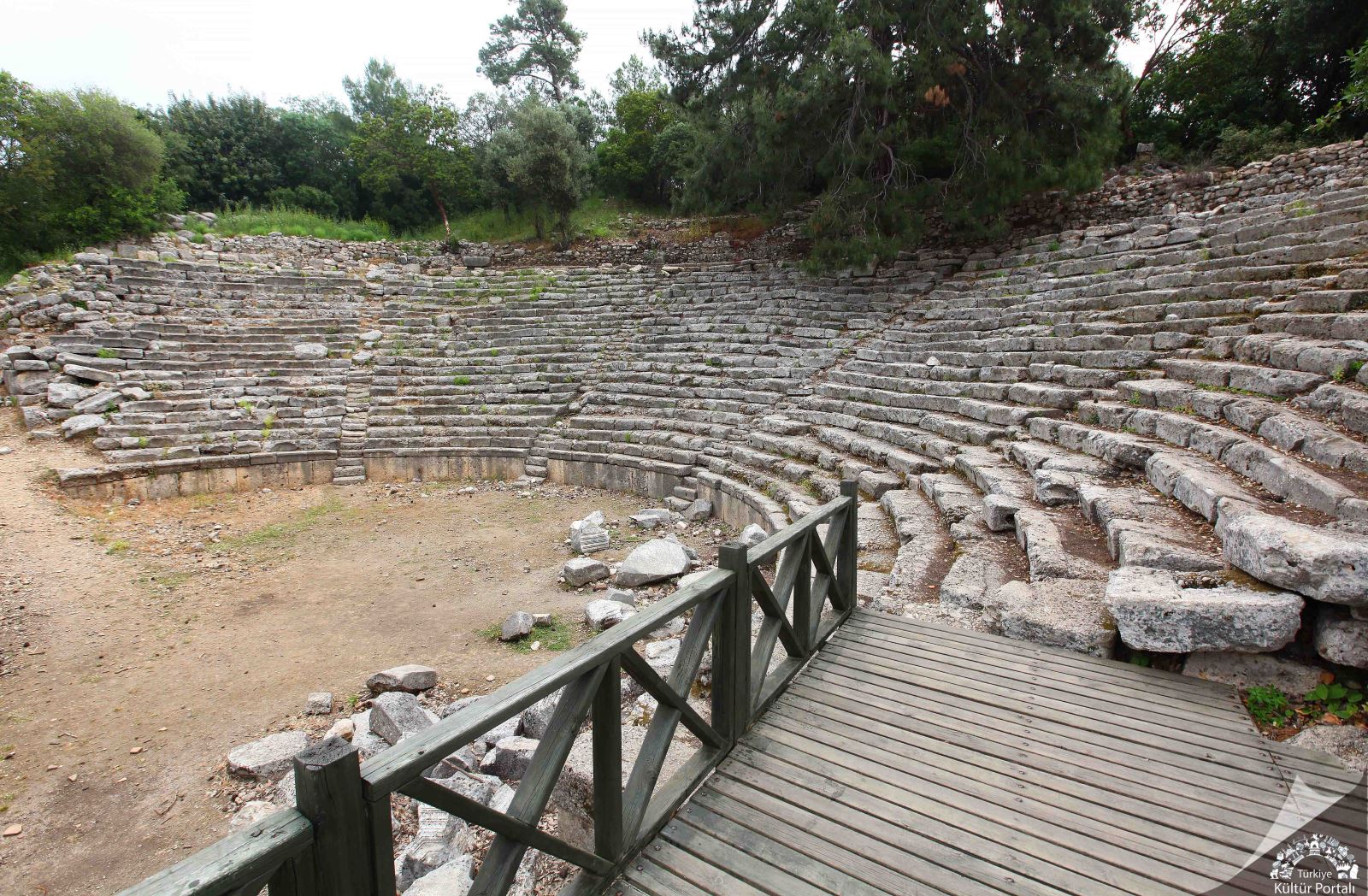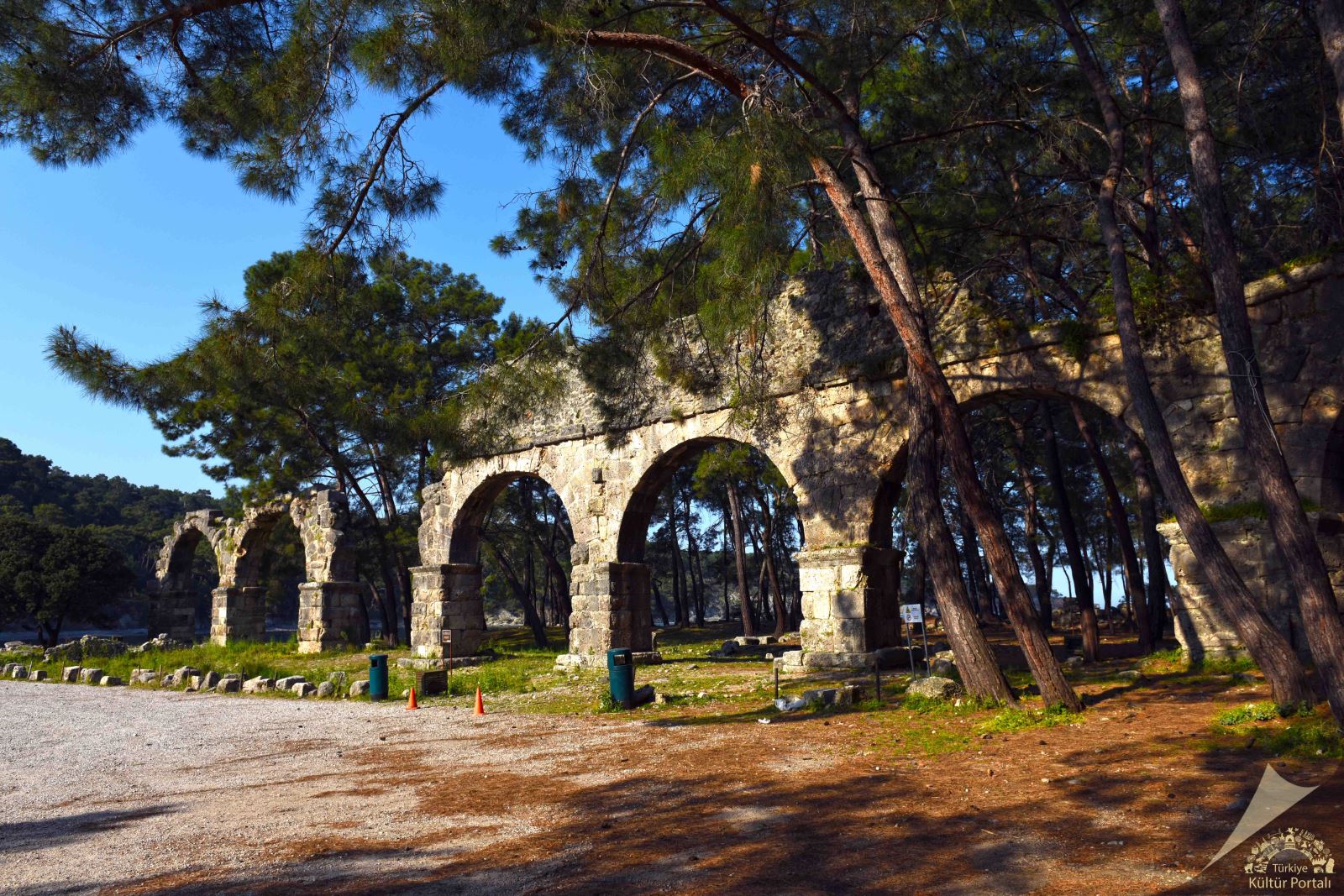It is said that the Ancient City of Phaselis was founded by the Rhodesian colonists in the 7th century BC on a small peninsula extending into the Mediterranean. In the foundation legend, it is told that the colonists responded to the local people’s suggestions of corn or dried fish with a request for fish. Its geographical location indicates that it was an important port city. It has three ports, one on the north of the peninsula, the other on the northeast, and the third on the southwest coast. Ports, agoras and ship depictions on city coins emphasize Phaselis’ commercial port identity.

Phaselis Ancient City – Antalya
Phaselis is sometimes shown as the city of Lycia and sometimes Pamphylia region. In reality it is located between the borders of both regions. The city was dominated by Persia in the 5th century BC, by Mausolos the Satrap of Kayra in the 4th century, and finally by Pericles, the King of the neighboring city of Lmyra. The fact that they welcomed Alexander the Great with a golden crown in 333 BC is one of the most colorful pages in the history of the city. Phaselis, which changed hands many times after Alexander, became a member of the Lycian League in 167 BC and minted union coins. After being looted by pirates with the neighboring city of Olympos for a while, it came under Roman rule in 43 BC, which was the beginning of the city’s reconstruction and prosperity that would last at least 300 years. The city is visited by Emperor Hadrian in 129. The monumental arch with a single arch at the entrance of the main street starting from the south port was erected to commemorate this visit.
The 5th and 6th centuries were under Byzantine rule, and Phaselis is among the cities that joined the Kadıköy Council in 451. After the Arab raids in the 7th century, a new period of prosperity begins in the 8th century. After the Seljuk siege in 1158, Phaselis lost its importance due to earthquakes and the loss of functionality of its port and was completely abandoned from the beginning of the 13th century. Mostly Roman and Byzantine ruins have survived to the present day. These are lined up on both sides of the main street that forms the main axis of the city and connects the north-south ports. The street widens between the agora and the theatre, forming a small square. In the southeast corner of the square, steps provide access to the theater and the acropolis. The theater is a small-sized typical Hellenistic theater. It is understood from the remains that the stage building was added during the Roman period, and that the stage building wall was part of the new city walls that partially protected the city in the Late Byzantine period. To the right of the bend at the entrance of the ruins, the city’s old walls (3rd century BC), foundation remains that could be a temple or a monumental tomb are encountered. The slope behind the northern port is the city’s burial ground.

Phaselis Ancient City – Antalya
The most monumental structure that has survived to the present day is the aqueducts. The water needed by the city was brought from the spring on the northern hill.

Phaselis Ancient City – Antalya
There are three agoras, one opposite the theater and the other two to the right of the main street leading to the south port. Inside the agora opposite the theater, there are the remains of a small basilica from the Byzantine period. The other two important ruins of the city are the remains of two baths, one small and the other large, in the city square. Especially the small bath ruins give information about the heating system of the Roman Bath. Historians write that the chief goddess of the city was Athena, the goddess of war and wisdom. It is thought that the Temple of Athena and other important structures that have not yet been found are located on the forest-covered acropolis hill today.
Source: “Phaselis”, Antalya II from Past to Present. Volume, Antalya Provincial Directorate of Culture and Tourism (2012)
